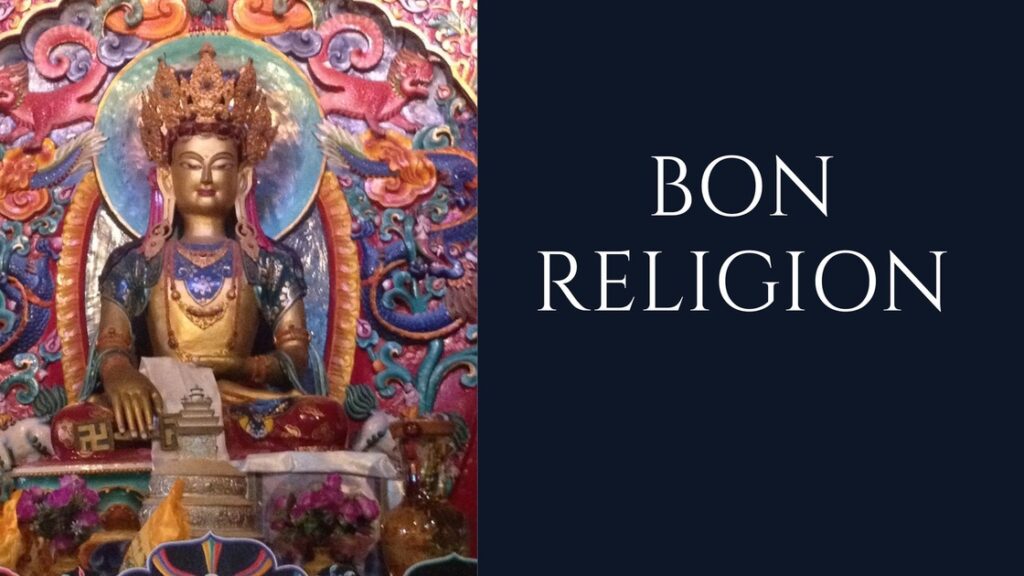+86-15889090408
[email protected]
Tibet, a land of breathtaking landscapes and spiritual traditions, is home to a diverse range of religious practices. Among these, the Bon religion holds a unique place as one of the oldest spiritual traditions in Tibet. In this blog post, we will delve into the fascinating world of the Bon religion, exploring its origins, key beliefs, and cultural significance.

The Bon religion traces its roots back thousands of years, even predating the arrival of Buddhism in Tibet. It is believed to have originated from the ancient shamanistic practices of the indigenous people of the region. Over time, the Bon tradition evolved and incorporated elements of Buddhism, creating a unique blend of spiritual teachings and practices.
The founder of the Bon religion is believed to be Tonpa Shenrab Miwoche. According to Bon tradition, Tonpa Shenrab Miwoche was an enlightened being who appeared in the ancient kingdom of Zhang Zhung, which is now part of western Tibet. He is considered the supreme teacher and the founder of the Bon religion.
Tonpa Shenrab Miwoche is said to have taught the Bon teachings and practices to his disciples, establishing the foundation of the Bon tradition that has been passed down through generations. The exact historical details of Tonpa Shenrab Miwoche’s life are not well-documented, as the Bon tradition relies heavily on oral transmission and ancient texts. However, his teachings and spiritual legacy continue to be revered by Bon practitioners to this day.
Tonpa Shenrab Miwoche is the legendary founder and supreme teacher of the Bon religion, an ancient spiritual tradition that predates Buddhism in Tibet. According to Bon tradition, Tonpa Shenrab Miwoche appeared in the ancient kingdom of Zhang Zhung, which is now part of western Tibet, thousands of years ago. He is revered as an enlightened being who brought profound teachings and spiritual guidance to humanity.
Tonpa Shenrab Miwoche is believed to have possessed extraordinary wisdom, compassion, and supernatural abilities. He dedicated his life to spreading the Bon teachings, which encompass a wide range of spiritual practices, rituals, and philosophical insights. His teachings emphasize the interconnectedness of all beings, the importance of ethical conduct, and the pursuit of spiritual realization.
The life story of Tonpa Shenrab Miwoche is recounted in ancient Bon texts known as the “Zhang Zhung Nyen Gyu.” These texts describe his birth into a noble family, his renunciation of worldly life, and his journey of spiritual awakening. They also detail his teachings on topics such as meditation, mantra recitation, divination, and healing practices.
Tonpa Shenrab Miwoche’s teachings have had a profound impact on Tibetan culture and spirituality. His legacy continues to inspire and guide Bon practitioners, who seek to cultivate wisdom, compassion, and spiritual realization through the practice of the Bon tradition.
While historical details about Tonpa Shenrab Miwoche’s life may be shrouded in myth and legend, his spiritual teachings and the profound impact of the Bon religion on Tibetan society are widely recognized. Today, Bonpo lamas and practitioners carry forward his teachings, preserving and promoting the ancient wisdom of the Bon tradition for future generations.
At the core of the Bon religion is the belief in the interconnectedness of all beings and the natural world. Bon practitioners revere the elemental forces of nature, such as mountains, rivers, and lakes, as sacred manifestations of divine energy. They also believe in the existence of various deities, spirits, and demons, which play significant roles in their cosmology.
The Bon tradition encompasses a vast array of teachings, rituals, and practices. These include meditation, mantra recitation, divination, and healing ceremonies. Bonpo lamas, or spiritual teachers, guide their disciples through these practices, helping them cultivate wisdom, compassion, and spiritual realization.
The Bon religion has had a profound influence on Tibetan culture and society. Its rituals and ceremonies are deeply ingrained in the fabric of Tibetan life, from birth to death. Bonpo monasteries, adorned with vibrant murals and sacred artifacts, serve as centers of spiritual learning and community gatherings.
In addition to its spiritual significance, the Bon tradition has also contributed to Tibetan art, literature, and medicine. Ancient Bonpo texts contain valuable knowledge on various subjects, including astrology, herbal medicine, and the arts. This rich cultural heritage continues to inspire and enrich Tibetan society.
The arrival of Buddhism in Tibet had a significant impact on the Bon religion. Over time, the two traditions engaged in dialogue, exchange, and sometimes even conflict. While there were periods of tension, there were also instances of mutual influence and integration. Today, many Bon practitioners embrace both Bon and Buddhist teachings, finding harmony in their shared spiritual goals.
During the cultural and political upheavals of the 20th century, the Bon religion faced immense challenges. However, dedicated practitioners and scholars worked tirelessly to preserve and revive the Bon tradition. Today, there are Bonpo monastic institutions, educational centers, and research institutes that continue to safeguard and promote the ancient wisdom of the Bon religion.
The Bon religion stands as a testament to the rich spiritual heritage of Tibet. Its ancient wisdom, rituals, and teachings offer a unique perspective on the interconnectedness of all beings and the natural world. Whether you are a spiritual seeker or simply curious about Tibetan culture, exploring the Bon religion can provide valuable insights and a deeper appreciation for the diverse tapestry of Tibetan spirituality.